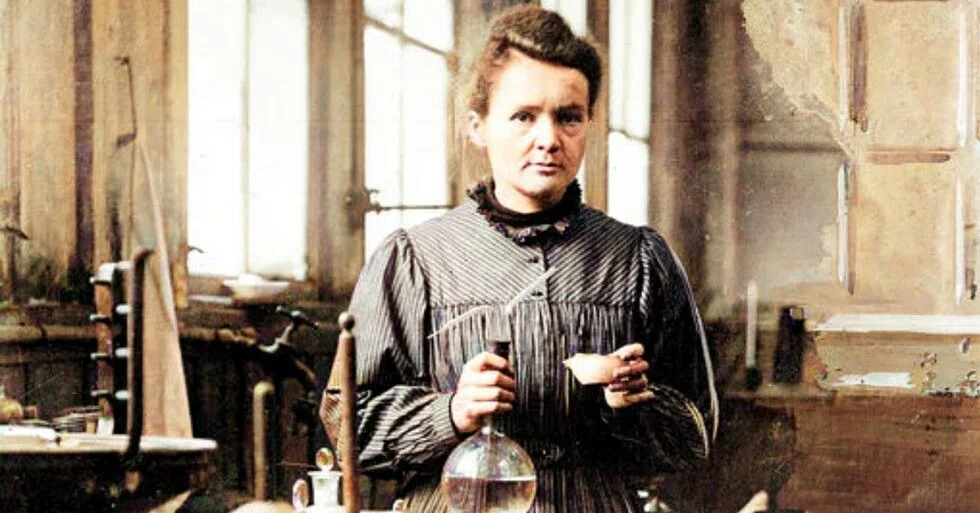Many collections with interesting facts about scientists claim that the famous Marie Curie valued the first gram of radium she isolated so much that she always carried it with her and this had a negative impact on the scientist’s health. We checked to see if there is any confirmation of this story.
Mentions that Marie Curie wore either a pendant or an ampoule of radium on her chest can be found on a variety of resources: from publications in "VKontakte" to portal materials "Moscow24", from "Peekaboo" to the portal "Scientific Russia". Some details of the plot may change from one material to another: for example, according to one version, a pendant with radium decorated photograph of Pierre Curie, who died shortly after receiving the Nobel Prize for this discovery.
We found the earliest mention of this story in Russian-language sources in a 2004 publication on an amateur website dedicated to radiation. Google Sites user writes: “The outstanding nuclear physicist Maria Sklodowska-Curie died of leukemia (cancer) as a result of long-term work with radioactive substances. While working with radioactive substances, she did not take any precautions and even wore an ampoule of radium on her chest as a talisman.” In the material of 2005 similar the story is supplemented with a link to the source - a book by Eva Curie, the daughter of the famous scientist.
This book of memoirs actually contains a fragment about the first gram of a new substance obtained by the famous spouses. Eve Curie writes: “Maria will never part with the first gram of radium she received. She later bequeaths it to her laboratory. <…> Other grams will be valued differently - worth their weight in gold. Radium, regularly put on the market, becomes the most expensive substance in the world. One gram of radium is worth 750,000 francs in gold." As we see, Curie the Younger does not specify that this gram of radium (or any other samples of this metal) was stored precisely in the ampoule that her famous mother carried with her. Moreover, in one of the subsequent chapters, Eva tells how, during the First World War, Marie Curie “evacuated” that same gram of radium from Paris to Bordeaux: she transported samples (!) of the metal in a heavy lead box.
Although the authors of most publications on the Internet associate wearing an ampoule with radium on the chest with ignorance of the dangerous properties of this chemical element, they underestimate great scientists in vain. The Curies did not really know all the details, but they worked with the metal they discovered in the laboratory and even observed its effect on human skin. Eve Curie writes: “The German scientists Walchow and Gisel declared in 1900 that the new substance acted physiologically, and Pierre, disregarding the danger, immediately exposed his forearm to radium. To his delight, the area of skin was damaged! In a note for the Academy of Sciences, he calmly describes the observed symptoms: “The skin turned red on a surface of 6 sq. cm; it has the appearance of a burn, but does not hurt or is slightly painful. After some time, the redness, without spreading, begins to become more intense; on the 20th day, scabs formed, then a wound, which was treated with dressings; on the 42nd day, the epidermis began to rebuild from the edges to the center, and on the On the 52nd day, there still remains a wound about a square centimeter in size, which has a grayish color, which indicates deeper tissue necrosis.” Let us add that Madame Curie, carrying several centigrams of a very active substance in a sealed glass tube, received burns of the same nature, although the small test tube was in a thin metal case.” It would be strange to believe that, with such life experience, Marie Curie wore an ampoule of radium in the form of a pendant.
The claim that the Nobel Prize winner bequeathed that very gram of radium to her laboratory (now the Radium Institute in Paris) corresponds reality. However, on website Memorial Museum, which operates at the Institute, we could not find any mention of the ampoule-pendant. If the story being verified was true, the museum staff would probably talk about it, and the ampoule itself would be exhibited in one of the halls. Thus, now there is not a single authoritative source that would describe the story of the unusual jewelry.
Fake
- E. Curie. Marie Curie
- https://musee.curie.fr/
- https://www.smithsonianmag.com/history/madame-curies-passion-74183598/
If you find a spelling or grammatical error, please let us know by highlighting the error text and clicking Ctrl+Enter.







